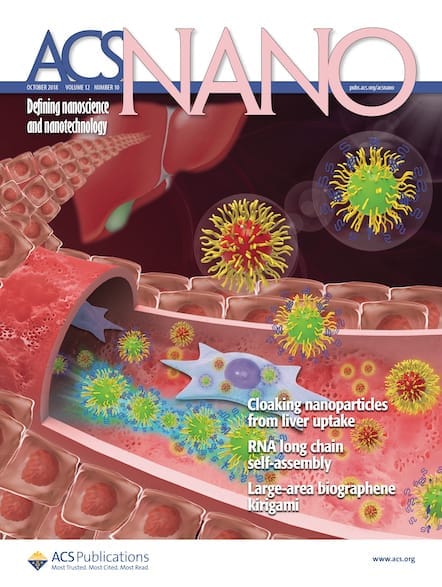mRNA vaccines have been in human trials for cancer and infectious disease for more than a decade, but the first to make it to market were for COVID-19. Below are some recent studies that demonstrate post-pandemic developments in mRNA vaccine technology.

The COVID-19 pandemic accelerated the development of messenger RNA (mRNA) vaccines, in large part due to massive increases in funding. These vaccines work by introducing a small piece of mRNA—the code that is used for protein production. This allows cells in the host to produce a harmless fragment of a pathogen’s protein. The immune system recognizes that fragment as foreign and begins to make antibodies, allowing for recognition of live pathogens and protection against future infections.
mRNA vaccines have been studied for several decades, but the past few years have allowed huge leaps in understanding.
The Role of Lipids
Lipid nanoparticles (LNPs) are a type of spherical vesicle with a homogeneous lipid core. Naked mRNA is unstable, but when cloaked in an LNP bubble, it is protected enough to be carried into cells where it can be unpackaged. Liposomes—early versions of LNPs—have already proven to be a useful delivery platform for nanomedicines, and several liposomal drugs have been approved and applied to medical practice.1
Subsequent generations of lipid nanocarriers exhibit more complex architectures and enhanced physical stabilities—but nanostructured lipid carriers and solid LNPs have become the preferred drug delivery platforms, including antitumor and nucleic acid therapeutics and vaccine delivery systems.1
These technologies continue to advance even further. In a recent study published in Accounts of Chemical Research, the authors provide an updated overview of the core features of LNP for RNA delivery, including theory and methods for LNP self-assembly—a new area of research harnessing the electrostatic interactions between the nucleic acid and charged lipids, which promote nanoparticle growth via hydrophobic interactions.2
There are several considerations in the design of novel lipid-mRNA therapeutics, one of which is the preparation of LNPs to ensure stable formulation and long-term durability.3 A study in Molecular Pharmaceutics investigates the impact of three common biological buffers (HEPES, Tris, and PBS) on mRNA-LNP durability and performance.
After conducting in vivo and in vitro testing, the authors reported that HEPES- and Tris-buffered LNPs were more optimal for maintaining stability after long-term storage than PBS, but more studies are necessary to further understand the influence of other storage conditions on LNPs and mRNA delivery.
Due consideration also needs to be given to preserving the integrity of macromolecular higher-order structure, which is necessary for drug and vaccine product stability. In a recent Molecular Pharmaceutics perspective, the authors explore the similarities and differences between the emerging role of higher-order structure pertaining to mRNA-LNPs compared to pharmaceutical proteins.4
What’s Next?
Building on the success of injectable mRNA vaccines, teams are now working to develop an inhalation-based option for lung diseases. mRNA could provide gene therapy for disorders such as cystic fibrosis, but delivery is an issue.
Research published in ACS Nano describes how to make LNPs stable throughout nebulization and mucus penetration, yet still able to be broken down for endosomal escape.5 Challenges remain, but the findings of this study may help to further the development of intranasal mRNA vaccines and pulmonary gene delivery techniques.
There remains much interest in organ-level delivery, but it is also important to understand effects at the cellular level. One recent study considers how the chemistry of LNPs can help guide unique in vivo RNA delivery fates within the liver and ultimately alter therapeutic outcomes in a cancer model.6
The team found that even small changes in the chemical composition of LNPs can have an impact on both the biofate of LNPs and therapeutic outcomes. The results illustrate the importance of understanding cellular localization of RNA delivery and highlight the need to incorporate further checkpoints when choosing nanoparticles beyond simply their biochemical and physical characterization.6
Alongside mRNA investigations, an enormous amount of scientific research has been conducted to design and refine individual components of LNPs for efficient and safe delivery.1 But this only scratches the surface of the potential for these vaccines, and much more will be uncovered in the coming years.
Explore Related Research in ACS Journals
Enzyme-Catalyzed One-Step Synthesis of Ionizable Cationic Lipids for Lipid Nanoparticle-Based mRNA COVID-19 Vaccines
DOI: 10.1021/acsnano.2c07822
Developing Biodegradable Lipid Nanoparticles for Intracellular mRNA Delivery and Genome Editing
DOI: 10.1021/acs.accounts.1c00500
Recent Advances in the Noninvasive Delivery of mRNA
DOI: 10.1021/acs.accounts.1c00493
Deconvoluting Lipid Nanoparticle Structure for Messenger RNA Delivery
DOI: 10.1021/acs.nanolett.0c01386
Lipids and Lipid Derivatives for RNA Delivery
DOI: 10.1021/acs.chemrev.1c00244
References
- Tenchov, R. et al. Lipid Nanoparticles–From Liposomes to mRNA Vaccine Delivery, a Landscape of Research Diversity and Advancement. ACS Nano 2021, 15, 11, 16982–17015.
- Eygeris, Y. et al. Chemistry of Lipid Nanoparticles for RNA Delivery. Acc. Chem. Res. 2022, 55, 1, 2–12.
- Henderson, M. I. et al. Leveraging Biological Buffers for Efficient Messenger RNA Delivery via Lipid Nanoparticles. Mol. Pharmaceutics 2022, 19, 11, 4275–4285.
- Kloczewiak, M. et al. A Biopharmaceutical Perspective on Higher-Order Structure and Thermal Stability of mRNA Vaccines. Mol. Pharmaceutics 2022, 19, 7, 2022–2031.
- Kim, J. et al. Engineering Lipid Nanoparticles for Enhanced Intracellular Delivery of mRNA through Inhalation. ACS Nano 2022, 16, 9, 14792–14806.
- Johnson, J. T. et al. Lipid Nanoparticle (LNP) Chemistry Can Endow Unique In Vivo RNA Delivery Fates within the Liver That Alter Therapeutic Outcomes in a Cancer Model. Mol. Pharmaceutics 2022, 19, 11, 3973–3986.
